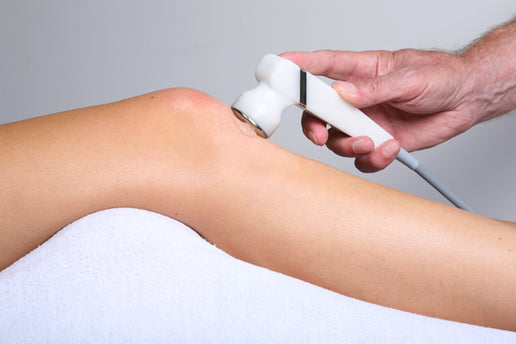Ultrasound Therapy

Posted by Alex Torres
Learn How Ultrasound Therapy Works and its Applications
Ultrasound therapy remains a very popular therapy and pain treatment option today—even as several research studies have shown the treatment to be ineffective. So, why do people continue to use Ultrasound as a therapy and should you use it to treat pain, inflammation and other issues?
The answer may simply depend on the individual. Whether the therapy works to relieve your specific ailments should be the guiding principle. It is also helpful to take a look at the facts including what is Ultrasound therapy, how is it used and what does it do?
What is Ultrasound Therapy?
Ultrasound therapy is the practice of using US (ultrasound) energy as a means of treating injuries, pain and other conditions. Ultrasound waves are very high-frequency sound waves that reside outside the range detectable by human ears. These ultrasound waves are able to stimulate tissues and this stimulation causes heating and cell activity that is thought to result in accelerated recovery times for certain injuries.
There are two main classes of ultrasound therapy—thermal and non-thermal. The former creates heat in the tissues, while the latter has a massaging effect.
How Does Ultrasound Therapy Work?
During ultrasound therapy, a US machine directs high frequency sound waves at the site of the injury, and through two main types of therapeutic effects, cause tissues to heal. The two effects are grouped under thermal and non-thermal therapies. Thermal therapy elevates the temperature of the tissue, while non-thermal therapies conduct a massaging, stimulating action in the tissue. Through these two types of therapy Ultrasound can speed up recovery times for certain injuries, some studies have found.1 (Watson 2006)
Ultrasound Therapy devices are popular treatment methods for physical ailments and pain.
Thermal US Therapy
How does thermal US therapy heal injuries? Thermal ultrasound therapy heats tissues like tendons and ligaments (as well as muscle tissues) to help solve inflammation issues and cause an excess of blood inside the tissue. This influx of blood can create a healing effect deep inside tissues that may not otherwise receive this inflow of blood, studies seem to suggest.
Non-thermal US Therapy
Non-thermal Ultrasound therapy relates to two main types of therapeutic actions: cell stimulation and fluid exchange. The former being the one that appears to have more proven impact on healing and therapeutic benefits.
In non-thermal ultrasound therapy the cell membranes are excited and activity in the cell increases. This increase in activity can be therapeutic in some cases.
The effect of massaging of the tissues is thought to have less of an impact than the cellular stimulation from ultrasound. The therapeutic effect from the resulting increased flow of tissue fluids might have an impact, however this has not been supported in any research studies.
How Does Ultrasound Heal Tissue?
In short, Ultrasound's healing effects on tissue have not been completely defined by science. However, the two main theories of healing may be related to the stimulation of the cells inside of ligaments, tendons and muscles, and the heating of these cells to limit or resolve inflammation and increase blood flow. This might have benefits to tissues deeper inside the body that can not respond as well to normal heating pad treatments.
What Types of Pain Can Ultrasound Treat?
Ultrasound can and is used to treat many different types of pain from runner's knee to muscle spasms and even back pain. It is generally up to your physical therapist to decide on which types of pain to treat with ultrasound. Few studies show ultrasound increases recovery time for many injuries. However, for specific injuries some studies have shown increased recovery times.
Generally speaking, ultrasound may be used to treat injuries like tendonitis, joint issues including shoulder pain, ligament injuries, muscle pain and strained joints.
Ultrasound May Treat the Following Injuries:
- Muscle pulls and injuries
- Joint pain and tendonitis
- Bursitis of the knee
- Sprained ankle and other joints
Portable ultrasound and TENS units are used to treat pain and relieve symptoms for many common injuries including tendonitis.
UltraTENS II Ultrasound and TENS Combo Unit

Using Portable Ultrasound Machines at Home to Treat Pain
Portable ultrasound machines are available for use at home. These machines may be a viable treatment method for specific injuries, however you should consult with your physical therapist and doctor before use. Ultrasound should not be used in certain cases. US is not to be used on areas with medical implants, reconstructions, pacemakers, cancerous growths, or broken bones.
- Watson, Tim. (2005). Tissue Repair: The Current State of the Art. SportEx Medicine. 28.
- Tim Watson, Ultrasound Therapy, electrotherapy.org
SHARE:

